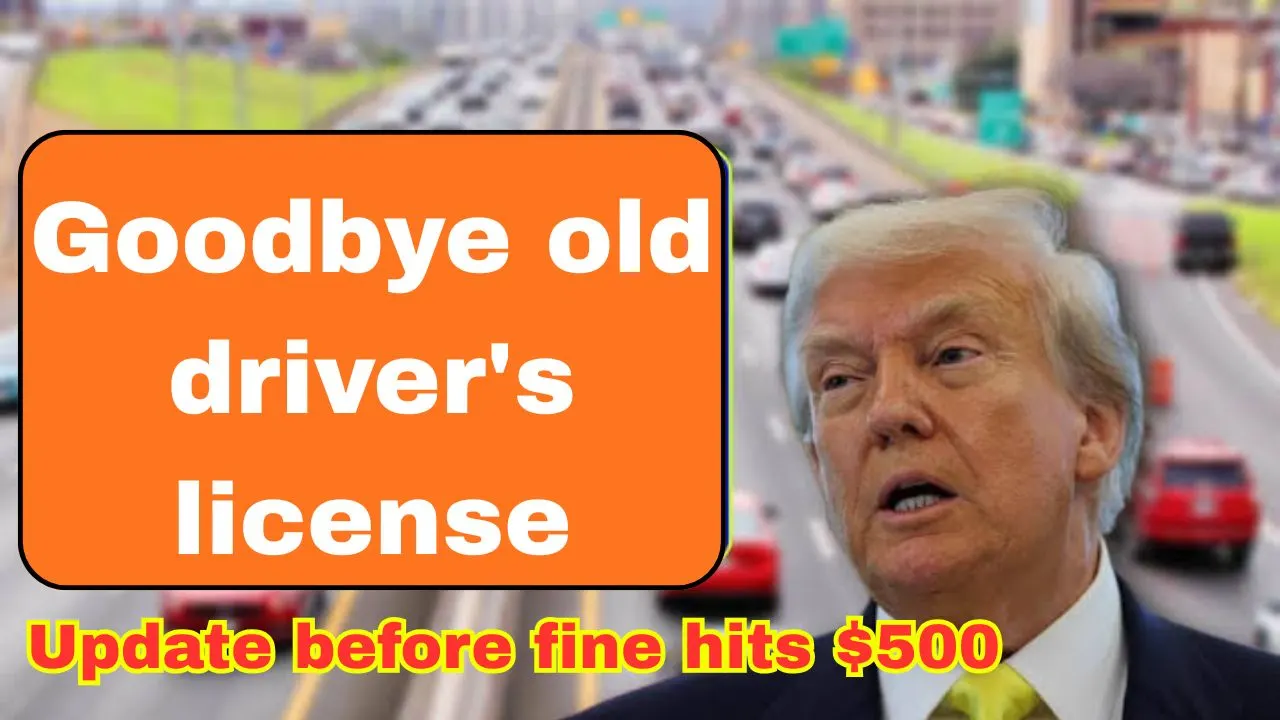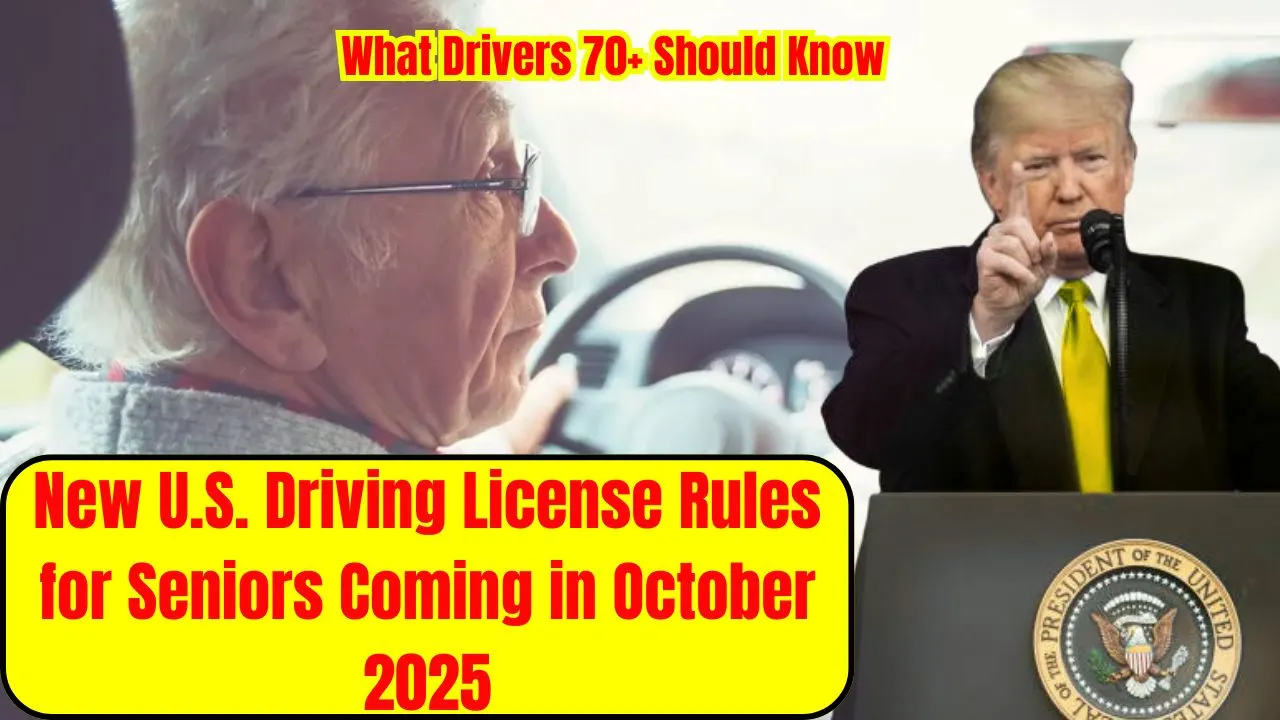Hey there, if you’re still holding on to an outdated license, it’s time for a reality check. The clock is ticking on the Old Driver’s License USA by late 2025, that card without the right security features could be useless for many federal uses. You’ll want to act now to avoid fines, hassles, and unexpected travel obstacles.
In this post, I’ll walk you through exactly why the Old Driver’s License USA is being phased out, what changes are coming, when you have to update, and how to make sure you’re ready well before that $500 penalty possibility kicks in.
Old Driver’s License USA: What You Need to Know
The term “Old Driver’s License USA” refers to any driver’s license that does not comply with the updated REAL ID standards. After May 7, 2025, many federal agencies will start rejecting those older licenses for boarding domestic flights or getting into federal buildings.
By October 1, 2025, the rules become stricter: non‑compliant licenses may no longer work for a host of essential functions. Some states are warning that failing to upgrade could lead to fines as high as $500 in certain situations.
So if your license doesn’t have the required markings or security features, it’s in your best interest to prepare for the change now.
Overview Table
Here’s a quick reference summary of what’s changing, when, and what’s at stake:
| Key Change | Details |
| REAL ID Enforcement Begins | May 7, 2025 for federal uses like air travel and access to federal buildings |
| Final Deadline for Full Compliance | October 1, 2025 |
| Maximum Fine for Non‑Compliance | Up to $500 in some states |
| Affected Uses | Domestic flights, federal building access, some secure facilities |
| Required Documents | Proof of identity, Social Security number, proof of residency, existing license |
| State Variation | Penalties, processes, and deadlines vary by state |
Why the change is happening
The push to retire the old licenses isn’t arbitrary. It all ties back to the REAL ID Act, passed after 9/11, which sets federal minimum security standards for state-issued IDs. Many older licenses don’t meet those stricter rules.
Because states were slow to adopt those standards, enforcement was repeatedly delayed. But now, the government is turning up the pressure: moving ahead with stricter checks and phasing out non‑compliant IDs for federal purposes.
With rising concerns about identity theft, fraud, and national security, the updated rules are designed to ensure every driver’s license is safer, more verifiable, and more uniform nationwide.
Who needs to upgrade
Pretty much everyone who uses a license for federal activities:
- People flying within the U.S. : old licenses won’t get you through TSA after enforcement begins.
- Those accessing federal buildings : expect your old license to be rejected.
- Those renewing or replacing licenses : any new card issued after the deadline must comply.
- Everyone else : even if your license is valid now, it doesn’t exempt you from the upgrade.
How to update your driver’s license
Switching from your old license to a REAL ID‑compliant card is straightforward if you follow these steps:
- Check your current license
Look for a star or indication that it’s REAL ID‑compliant. No star? It’s old. - Gather necessary documents
You’ll need proof of identity (birth certificate or passport), Social Security number, proof of residency (utility bills, lease), and your existing license. - Visit your local DMV or licensing office
Some states allow pre‑application online, but you’ll likely need an in-person visit. - Pay the standard renewal or upgrade fee
This fee varies by state, typically not exceeding the usual renewal cost. - Receive your upgraded license
It will include enhanced security features and the REAL ID star. - Check for digital versions
Some states now let you add your license to a mobile wallet, but the physical card will still be required in many places.
Consequences of ignoring the deadline
If you stick with your old driver’s license past the deadlines, here’s what could happen:
- Denied boarding on domestic flights
TSA won’t accept non‑compliant IDs for many flights after enforcement begins. - Access blocked at federal facilities
Your license may not let you enter courts, government offices, or secure installations. - Potential fines
Some states warn of fines up to $500. - Travel delays and extra hassle
Having to fall back on a passport or other ID is inconvenient and may cause expensive disruptions.
State-level differences and tips
- Penalties and enforcement vary : Not all states will strictly enforce the $500 fine or may have graduated penalties.
- Be early : DMV lines are already building. Don’t wait until the last minute.
- Double-check your state’s rules : Some states might have extra document requirements or specific procedures.
- Bring original documents : Photocopies often won’t be accepted.
- Ask about mobile license options : If your state supports digital IDs, add it, but don’t rely solely on that.
FAQs
Enforcement begins May 7, 2025 for many federal uses, with full restrictions after October 1, 2025.
No. The $500 is a maximum penalty in some states for non‑compliance, not a federal rule.
Yes. A valid U.S. passport or other accepted federal ID works for domestic flights and federal building access if your license is non‑compliant.
No. Even if your license isn’t expired, you must proactively request the REAL ID version to avoid issues.
Look for a star symbol (often gold or black) in the top corner. If it’s missing, your license is likely old and non‑compliant.







